 Loading... Please wait...
Loading... Please wait...Free Shipping on orders over $400
Categories
Medical Illumination: 4 Medical Lights to Utilize in Your Health Practice
Posted on 05/31/2019 10:10:41
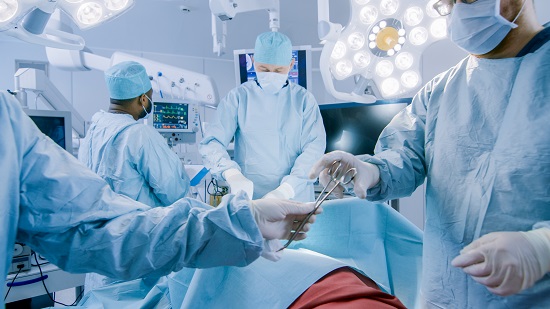
The right medical lighting is essential throughout health care facilities – it supports both your team and your patients, and helps drive positive medical outcomes. Throughout the day medical professionals perform various procedures, exams, and tasks, many of which will require specialized types and levels of lighting systems in order to encourage your team's best performance and avoid adverse events.
4 Medical Lights to Utilize in Your Health Practice
1.Medical Exam Lights
2.Penlights
3.Woods Lights
4.Surgical Lights
Proper medical lighting can improve your team's concentration and keep them alert as they perform the high-stakes procedures on which your patients depend. No matter your specialty, optimal lighting design is imperative for every medical practice.
Whether you're designing a medical facility from scratch, updating your medical lighting equipment, or replacing individual lighting fixtures, there are several lighting systems options you should consider when making your medical illumination choices. Keep reading to find out more about how medical examination lighting affects your practice, along with what to look for when choosing your medical lights.
Why is Medical Lighting So Important?
When you think about the clinical practice environment that doctors, nurses and other medical professionals operate within, it's quite stressful. They must make quick and accurate diagnoses, plus carry out complicated procedures that dramatically affect patients' quality of life – and sometimes save lives. In choosing their medical office lighting, you can help set them up for their utmost performance success in every procedure they undertake. Conversely, poor medical lighting equipment can contribute to a chaotic light field that is ripe for medical errors and stress for both health care professionals and patients. Lighting must allow your team to successfully complete their surgical and outpatient tasks.
In addition, the right lighting solutions can help support healthy circadian rhythms, improving your team's productivity and reducing the chances for medical professionals to feel tired and distracted. When you consider that medical teams often work long shifts and unusual hours, this becomes especially important.
Some studies have also shown that appropriate medical office lighting has a profound effect on a patient's state of mind – bright and harsh light can make patients feel apprehensive and anxious, for example, while a more natural light source can promote a feeling of calm and comfort.
Because patients often need different levels of light than your medical team, it's important to build flexibility and adaptability into your lighting design.
4 Medical Lights to Utilize in Your Health Practice
Different areas within your practice – and different tasks – require different lighting products and light intensity. The various types of medical task lighting can help make sure your health care facility team functions at its highest level of user performance and produces the best outcomes for patients. Below are a few of the typical types of illumination lights you can expect throughout a seamlessly functioning medical practice.
1. Medical Exam Lights
Your team will carry out a variety of examinations and minor medical or surgical procedures within your examination rooms. When choosing light fixtures for these areas, you must think of both your health care team and your patients. Your team needs a medical exam light to support visual acuity and concentration so that they can successfully complete patient-care tasks. However, your patients also need to feel comfortable. A softer level of light can soothe them and ease their anxieties about being in your facility to address a medical condition.
Sometimes, it's difficult to find medical examination lighting that strikes the right balance of helping patients feel at ease while also providing task-appropriate medical illuminations. In addition, because your team will execute so many different types of tasks within your examination areas, it's important that their lighting also be as flexible as possible so that it can adjust for a particular need – dimming or intensifying as appropriate. And you want to make sure lighting adjustments can be carried out in a way that's easy for the user and doesn't create a lot of distraction.
For example, medical lights can be used to light an area for a diagnostic measure, a simple visual exam or other, minor outpatient procedures. For the most part, medical lights serve your team best by making sure they can complete accurate visual examinations of skin and tissue. Overall, an examination light should clearly illuminate the medical professional's work area, without shadow or glare.
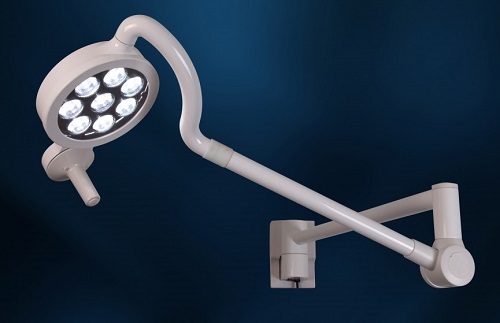
You can find medical exam lights that are wall mounted or table mounted, and some feature goosenecks for greater flexibility – in addition, some teams consider ceiling-mounted exam lights the easiest to adjust and the most flexible of all options. Of course, you'll need to collaborate with your medical team to determine their needs and preferences so that you can design the medical lighting package that will best support their performance. You have many options, and technology developments mean that you can help your team see better than ever before.
In addition, your team can often get a head start on an accurate diagnosis simply by assessing a patient's skin color – exam lights should exhibit appropriate color rendering that presents colors as they actually are so that your team's diagnoses are accurate.
Overall, your medical exam lights must be the most flexible and versatile of perhaps all your lighting choices, simply because they must fulfill a broad set of purposes and be flexible enough to change at a moment's notice. In addition to helping ensure best patient outcomes, sound lighting choices can also help guarantee operational efficiencies.
2. Penlights
For close and detailed examinations, your team needs a reliable collection of
well-made penlights – this is a specialist rather than a generalist device. A
penlight is simply a small, powerful flashlight shaped almost exactly like a
ballpoint pen. Penlights commonly are used to closely
examine the mouth and throat, assess pupils and examine
wounds.
Their overall purpose is to luminate a particular, confined area with bright white light in order to allow a medical professional to draw a conclusion or make a diagnosis. These modern tools are portable, light and versatile – and they're a key piece of your health care team's toolbox.
Each penlight should be bright enough to allow your team its best line of sight, but also keep from being so bright that it's blinding or unpleasant for your patients. Penlights should be durable, portable and affordable components of your team's collection.
Some penlights come with various light outputs and modes, so you'll need to talk with your team about what version or model may best meet their needs and expectations. Some penlights even come in disposable versions.
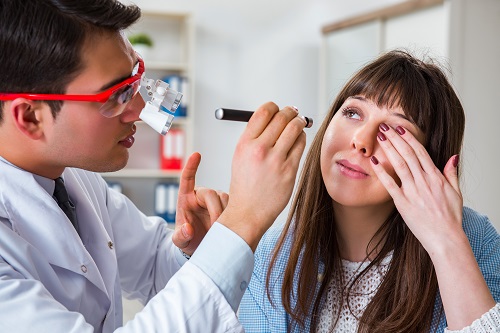
3. Woods Lights
Invented in 1903, the Woods light is a bit different in its medical applications. Rather than simply lighting a space for your medical team, it plays a key role in visually diagnosing several common skin issues. In fact, Woods lights are used across a broad spectrum of research and applied medical situations. Woods lamps are small, handheld devices that use black light to reveal the presence of fungi or bacteria or to detect changes in the pigmentation of a patient's skin. Black light is invisible to the naked eye, but because it belongs to the ultraviolet spectrum, it can help show skin conditions, reactions or abnormalities that the naked eye can't see.
For example, normal healthy skin will show as blue under a Woods light, while skin will reveal white spots where skin is thickened, yellow spots where skin is oily, and purple spots where skin is dehydrated, when exposed to medical illumination from a Woods light.
If you're purchasing equipment for an optometry practice, Woods lights are especially useful for detecting scratches or abrasions of the eye. Because of its versatility and ability to help physicians diagnose a broad range of issues across the medical field, a Woods lamp is an especially useful piece of the health care provider's tool kit. Beyond the light itself, you can also purchase Woods lights that feature a magnifier lens to give your team a more detailed view.
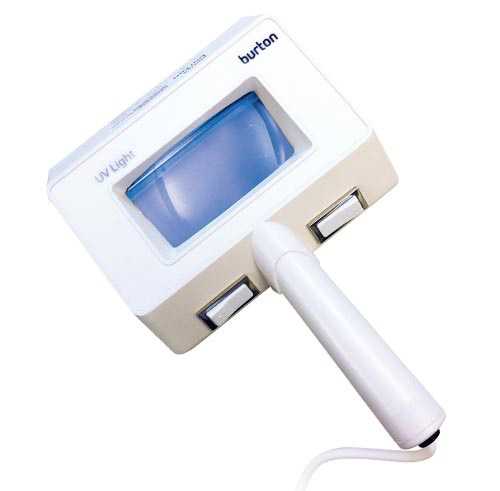
4. Surgical Lights
Surgical lights are a specific category of illumination used within operating rooms solely to effectively light a surgical site – and appropriate surgical lighting is a critical component of any successful surgical outcome.
Completing a successful surgical procedure requires a tremendous degree of intensity, concentration, and accuracy from everything and everyone in the room – including your team, your surgical accessories, surgical supplies, and your surgical lighting. In fact, some would argue that surgery lighting may be the most important consideration for your operating theater since these lights provide bright, focused lighting directly for the surgical site.
Surgery light systems play a key role in ambulatory intensive care centers, educational institutions, veterinary clinics, medical offices, research facilities, and hospitals across the world every day. Some also include a high-definition camera and monitor screen designed to complement lighting by offering the latest medical innovations to help your team complete procedures more successfully.
Like medical exam lights, you can find surgical light versions – like Burton lights – that are wall mounted or ceiling mounted – or portable procedure lights that can be transported wherever they're needed. Today's surgical lamps are primarily LED lights. In fact, many manufacturers have stopped making the traditional halogen bulb since LED bulbs provide more accurate and brighter color rendering, plus featuring low power consumption, boasting longer device life and producing little to no heat within the operating room. Overall, energy efficient LED lighting is now considered the gold standard for operating rooms.
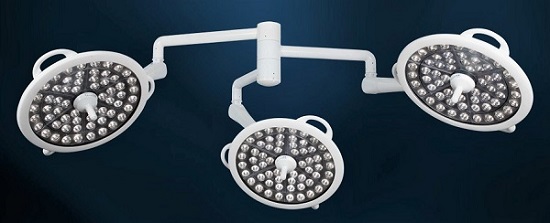
Medical Lighting Equipment
Making sure your hospital or medical facility has the best possible medical illuminations is key for ensuring successful procedures and positive outcomes for your patients. Your medical science team works hard every day to deliver the highest quality patient care, and you can support them by providing the healthiest light environment to facilitate their success. In addition, the right lighting products can help put your patients at ease while supporting your team's success. For example, your team performs countless intricate procedures every day, and inappropriate light can quickly cause strain and eye fatigue.
If you've read through the suggestions presented here and still feel like you need support in making your lighting choices, feel free to reach out to the team at USA Medical and Surgical Supplies. With substantial experience helping medical facilities choose medical supplies and products, our team can help you find the best lighting options that prepare your team for success. We proudly carry lighting products featuring the latest advances from some of the biggest names in medical lighting – including Burtons, Welch Allyn, and Medical Illumination .
We also are pleased to offer quantity discounts for multiple medical lighting purchases – please reach out to us for a personalized quote. You can reach us at 1-866-561-2380 or send us a message. We look forward to helping you.



